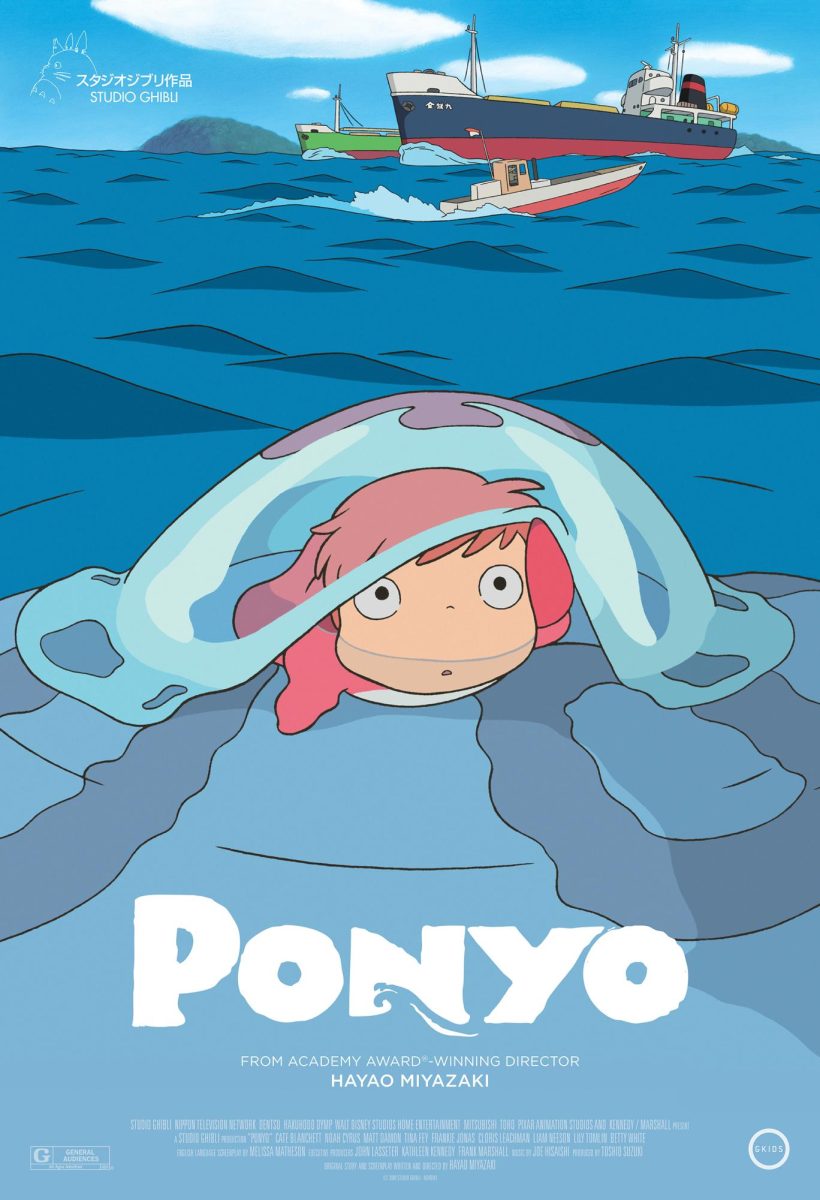“Ponyo” recently played in theaters again at this year’s Studio Ghibli Fest. Renowned for crafting iconic films like “Spirited Away” and “My Neighbor Totoro,” the director Hayao Miyazaki once again proves his unparalleled ability to create a world brimming with wonder, innocence and boundless imagination. Originally released in Japanese theaters on July 19th, 2008, and gracing American screens on August 14th, 2009, “Ponyo” quickly captured hearts worldwide, earning awards such as Animation of the Year at the Tokyo Anime Awards and the Japan Academy Film Prize for Best Animation Film.
The Story
At its core, “Ponyo” tells the story of a five-year-old boy named Sôsuke who discovers a goldfish he names Ponyo. Unbeknownst to him, Ponyo is the daughter of a sea wizard, Fujimoto and Granmamare, the goddess of the sea. Dreaming of becoming human, Ponyo uses her magic to transform herself into a human girl, inadvertently tearing the fabric of reality, which she and Sôsuke must then work to mend. While the plot draws on familiar elements reminiscent of “The Little Mermaid,” Miyazaki uses this narrative framework to explore the beauty of childhood, the simplicity of young love and the awe of the natural world.
Magical, Yet Relatable Characters
The real magic of “Ponyo” lies in its portrayal of its young protagonists. Miyazaki captures the essence of childhood with an authenticity that resonates deeply with audiences of all ages. Sôsuke and Ponyo are not just endearing but wonderfully complex and relatable. Their interactions are filled with the pure, unfiltered emotions typical of children, making their bond feel incredibly genuine. Whether it’s Ponyo’s joyful enthusiasm as she experiences the human world or Sôsuke’s quiet determination to protect his family, their actions and reactions perfectly reflect how children perceive and engage with the world around them.
One of the film’s most notable aspects is how it handles the character of Fujimoto, Ponyo’s father. Though he might be perceived as the “villain” of the story, Fujimoto is not an evil antagonist. Instead, he is a concerned parent, desperately trying to keep the world in balance and protect his daughter. From a child’s perspective, it’s easy to see why Fujimoto’s actions might be seen as antagonistic. After all, he stands in the way of Ponyo’s dream. However, the nuance in his character adds depth to the story, reflecting the very real experience of children feeling misunderstood by well-meaning adults.
Visually and Aurally Beautiful
Visually, “Ponyo” is nothing short of breathtaking. The hand-drawn animation, rich in color and detail, is a testament to Ghibli’s dedication to the art form. The ocean scenes are especially mesmerizing, with waves and underwater creatures coming alive in a way that only Studio Ghibli can achieve. The backgrounds add a layer of softness and warmth to the film, perfectly complementing the dreamlike atmosphere. The musical score by Joe Hisaishi further elevates the film, both epic and soft at the same time. The orchestral and choral arrangements create an immersive experience that lingers long after the credits roll.
“Ponyo” is one of the few Ghibli movies that is more geared towards children rather than a larger audience. Even so, it still has a heartfelt story that resonates with both young and old. Its portrayal of childhood, complete with well-written, relatable characters, is nothing short of magical. Whether viewed on the big screen or at home, “Ponyo” is a sweet, well-executed film that promises the Studio Ghibli we know and love.



